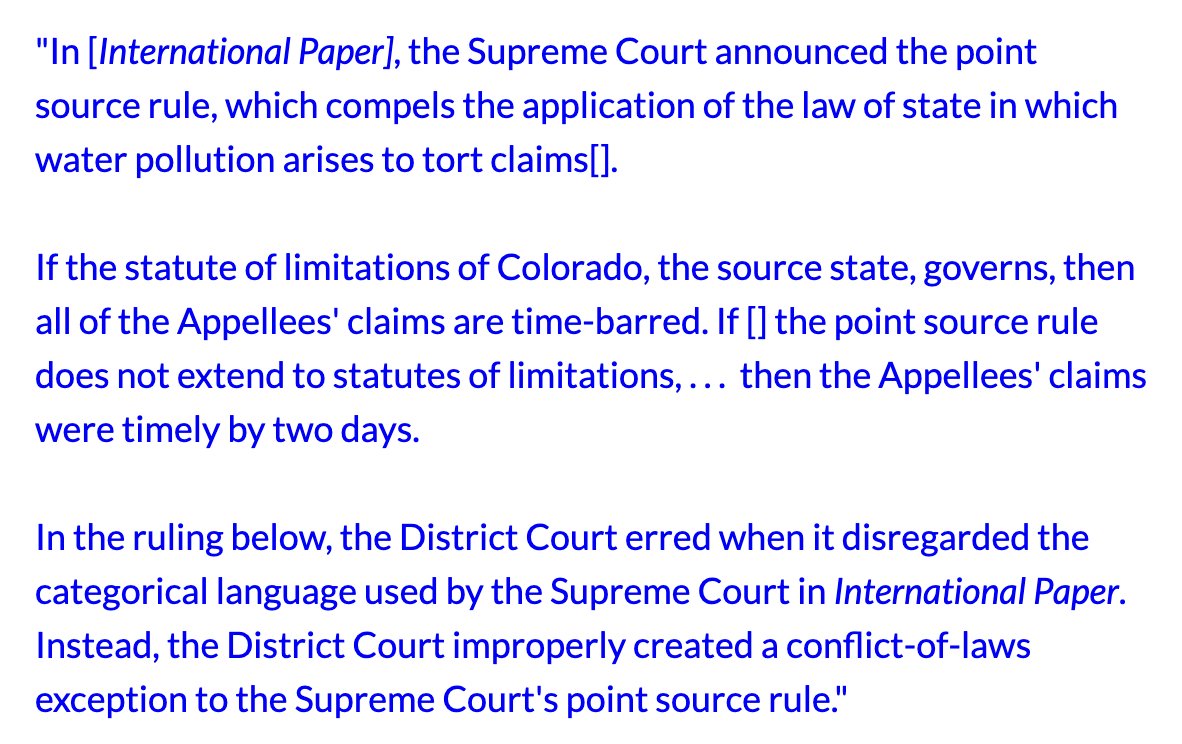
What does a brief look like when a dozen legal writing superstars (from @wilsonsonsini, Williams & Connolly LLP, and others) team up to write it?
Google's brief in Gonzalez.
We read a ton of legal writing, and Lisa Blatt and her team created magic here.
Let's see how. 1/x
Google's brief in Gonzalez.
We read a ton of legal writing, and Lisa Blatt and her team created magic here.
Let's see how. 1/x
What makes this brief so special is that it's a tour de force in a tricky (but powerful) technique: Emotional priming.
YouTube was accused of recommending ISIS terrorist videos to users. So the crack-shot team knew they had to do some emotional work before the legal stuff.
YouTube was accused of recommending ISIS terrorist videos to users. So the crack-shot team knew they had to do some emotional work before the legal stuff.
Let's start with the big picture. Because priming requires you to first figure out your end goals—what are the emotional or ideological targets you're aiming for?
It's worth reading Google's introduction with this in mind. But here is some of what they may have shot for:
It's worth reading Google's introduction with this in mind. But here is some of what they may have shot for:

To emotionally prime, you have to figure out these goals. Then you can get to crafting the prose and picking the details that will get you there.
Let's now move to the techniques Google's team used to pull these off.
Let's now move to the techniques Google's team used to pull these off.
First, the team teed up the task that service providers like YouTube face in juggling all the data the world feeds them—using hard-hitting numbers stacked on top of one another to create a cumulative sense of being overwhelmed by the enormity of it all. 

The team finishes this point in their priming with novel wordplay.
The writers invested in this figurative language to drive home their priming point—and notice that it's only engaging because the writers changed up the worn-out cliche with a fresh perspective.
The writers invested in this figurative language to drive home their priming point—and notice that it's only engaging because the writers changed up the worn-out cliche with a fresh perspective.

The writers were doing something else magic in that line: Defining a key (but what would otherwise be bland) term they will return to throughout the brief.
Recommendation algorithms.
We love when legal writers create pithy labels and define their own lexicon.
Recommendation algorithms.
We love when legal writers create pithy labels and define their own lexicon.
The writers spent a lot of time defining this term so that you'd start loving it.
In fact, they again use that example-stacking technique to make you feel something personal and real.
In fact, they again use that example-stacking technique to make you feel something personal and real.

Next, the authors start setting up a series of small logical points designed to open the door for their ultimate legal pitch.
Persuasion experts often call this the foot-in-the-door. You get readers to agree with one small thing, and then another, until your main point.
Persuasion experts often call this the foot-in-the-door. You get readers to agree with one small thing, and then another, until your main point.

When the writers get to their legal argument, they use more emotion-based tools.
First, they spend more time on the favorable details, and downplay the unfavorable parts of the law by quickly skimming (but not ignoring) them.
First, they spend more time on the favorable details, and downplay the unfavorable parts of the law by quickly skimming (but not ignoring) them.

Next, the team acknowledges a bad fact (which you simply must do—readers, and especially judges, smell fear if you run from the bad).
But they then immediately give you favorable details to put it into emotional context.
But they then immediately give you favorable details to put it into emotional context.

Notice how in this next snippet, the writers use a verb that injects negative connotations when describing what the plaintiffs are doing (gerrymandering).
And then, they give the emotional "why" for the parade of horribles that the plaintiffs' position will lead to.
And then, they give the emotional "why" for the parade of horribles that the plaintiffs' position will lead to.

This is going to be one of our favorite briefs of the term I think, but a lot more to come!
If you'd like to read the whole thing: drive.google.com/file/d/1C_6cpO…
If you'd like to read the whole thing: drive.google.com/file/d/1C_6cpO…
• • •
Missing some Tweet in this thread? You can try to
force a refresh
















